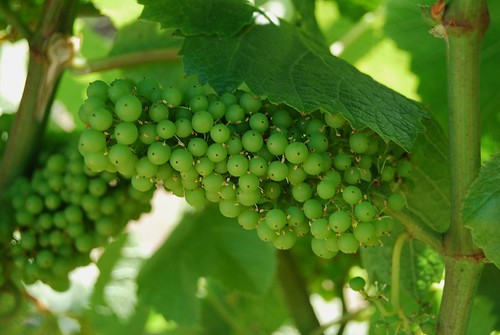 photo by Alister Robertson
photo by Alister Robertson
I’ve been lucky enough to attend two interesting, but very different, wine tastings recently.
The first of these was held at The Manse and organised by Alessandro Ragazzo, The Manse’s sommelier, and Sommeliers Australia.
The session focussed on the wines of Sicily (the island which is the football to Italy’s boot!). Italy is a happy hunting ground if you’re after the weird and the wonderful in terms of wine. Allegedly the country is home to over 1000 different wine producing grape varieties – so I was confident it wasn’t going to be an afternoon of Chardonnay or Shiraz.
Alessandro had put together 3 flights of 4 different wines: the white and red brackets were followed by a dessert wine and Marsala bracket. We also had a comprehensive handout which covered the history of wine in Sicily, with a few maps and plenty of interesting facts. For example, Sicily is about a third the size of Tasmania and yet annually produces 5 million hL of wine. Australia’s entire output is 11 million hL annually.*
Of the whites my favourite was the Benanti Pietramarina DOC Etna 2007 which is made from Carricante. I happen to have Tom Stevenson’s The Sotheby’s Wine Encyclopedia sitting next to me and apparently the Etna DOC is the same wine on which the Cyclops got drunk (thanks to Ulysses). Stevenson is somewhat dismissive of the whites: “… a soft but bland dry white” although the Pietramarina is worthy of individual note. My own notes indicate that while the nose wasn’t massively pronounced there were some herbal notes, anise and fennel, while the palate was less herbal but showed rich, ripe citrus fruit with a good seam of acidity. I was undecided if it was marmalade-y or preserved lemon.
sitting next to me and apparently the Etna DOC is the same wine on which the Cyclops got drunk (thanks to Ulysses). Stevenson is somewhat dismissive of the whites: “… a soft but bland dry white” although the Pietramarina is worthy of individual note. My own notes indicate that while the nose wasn’t massively pronounced there were some herbal notes, anise and fennel, while the palate was less herbal but showed rich, ripe citrus fruit with a good seam of acidity. I was undecided if it was marmalade-y or preserved lemon.
Unfortunately (for me), it looks like this wine retails for around $100 a bottle.
I won’t talk about the reds too much (if you’re interested, you can read about the Duca Enrico Duca di Salaparuta 1996). I was struck by how they all really felt as though they needed food. Of the four, the COS Cerasuolo di Vittoria DOCG 2009 struck me as being the most approachable with a good balance of acidity and tannins and a spicy, red cherry palate.
The dessert wines and Marsala bracket I found really interesting. Like (I suspect) most people, I don’t drink very much sweet wine and I drink even less fortified wine so I love the opportunity to try something new. We started with a Benanti Passito di Pantelleria. It was a 2005 and the bit of age showed in the glass: the wine was really quite amber in colour. The wine’s aroma was dominated by dried apricots with other dried fruits thrown in for good measure. The palate matched this and was suitably pronounced with pelnty of dried apricot, sultana, fig, honey and almost a note of maple syrup.
The concentrated flavours in Passito come about because the grapes are left to dry out before crushing. Traditionally, they’re left on straw mats in the sun. Pantelleria is a small volcanic island off the south west coast of Sicily. And the wine is made from the Muscat of Alexandria grape. Got that straight?
We wrapped up with two Marsalas from Vito Curatolo – a Superiore Secco and a Superiore Riserva. Marsala is made in a manner similar to Sherry and the mass production of the wine is actually thanks to a late eighteenth century Englishman, John Woodhouse, who thought the wine would be popular in England and began large scale production and export. Marsala has something of a poor reputation – which, on the basis of the two wines we tried, is rather undeserved.
The Superiore (aged for a minimum of 2 years) was very Christmas cakey, with plenty of coffee, coffee and cream and a nutty finish. The Superiore Riserva (aged for a minimum of 4 years) was a lot more savoury, with some Fino Sherry like characteristics and plenty of nuts, but none of the coffee.
I won’t be rushing out and buying up all the stocks of Marsala in Adelaide – for me, it will be an acquired taste. However, I think it’s a shame that it doesn’t have a higher profile and that there isn’t more of an opportunity for consumers to try good quality examples.
This was a great tasting: things moved at a good pace, it was well organised and (most importantly!) the wines were all really interesting. Apparently Alessandro hopes to run some more sessions like this in future – I’m looking forward to them already!
* This is taken from my notes and I haven’t independently verified it so please feel free to correct me!


